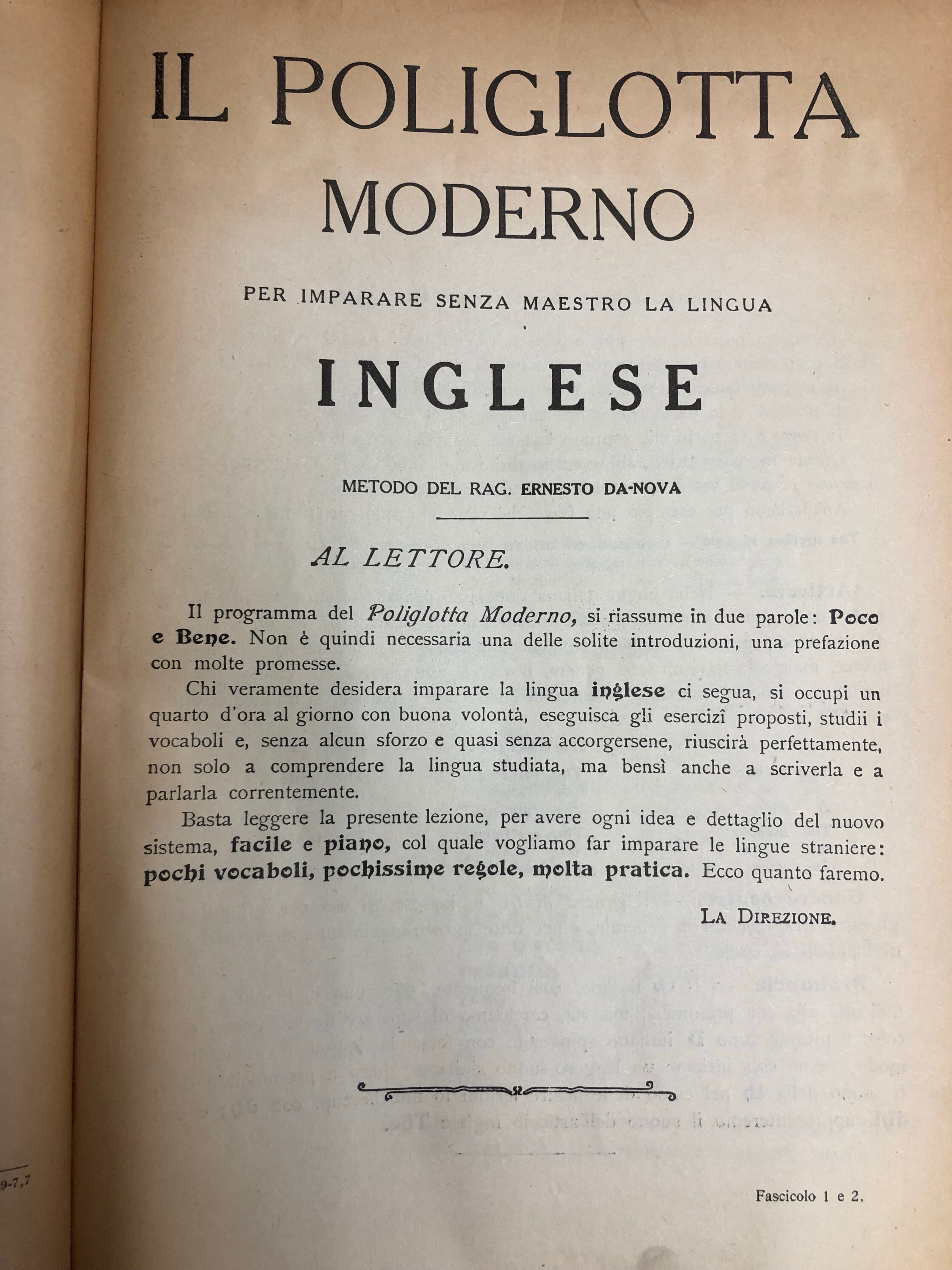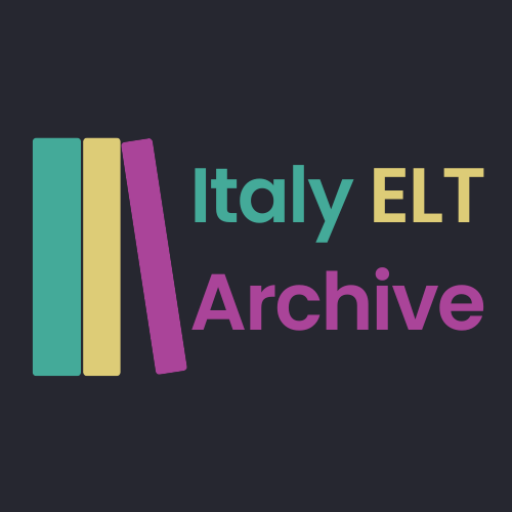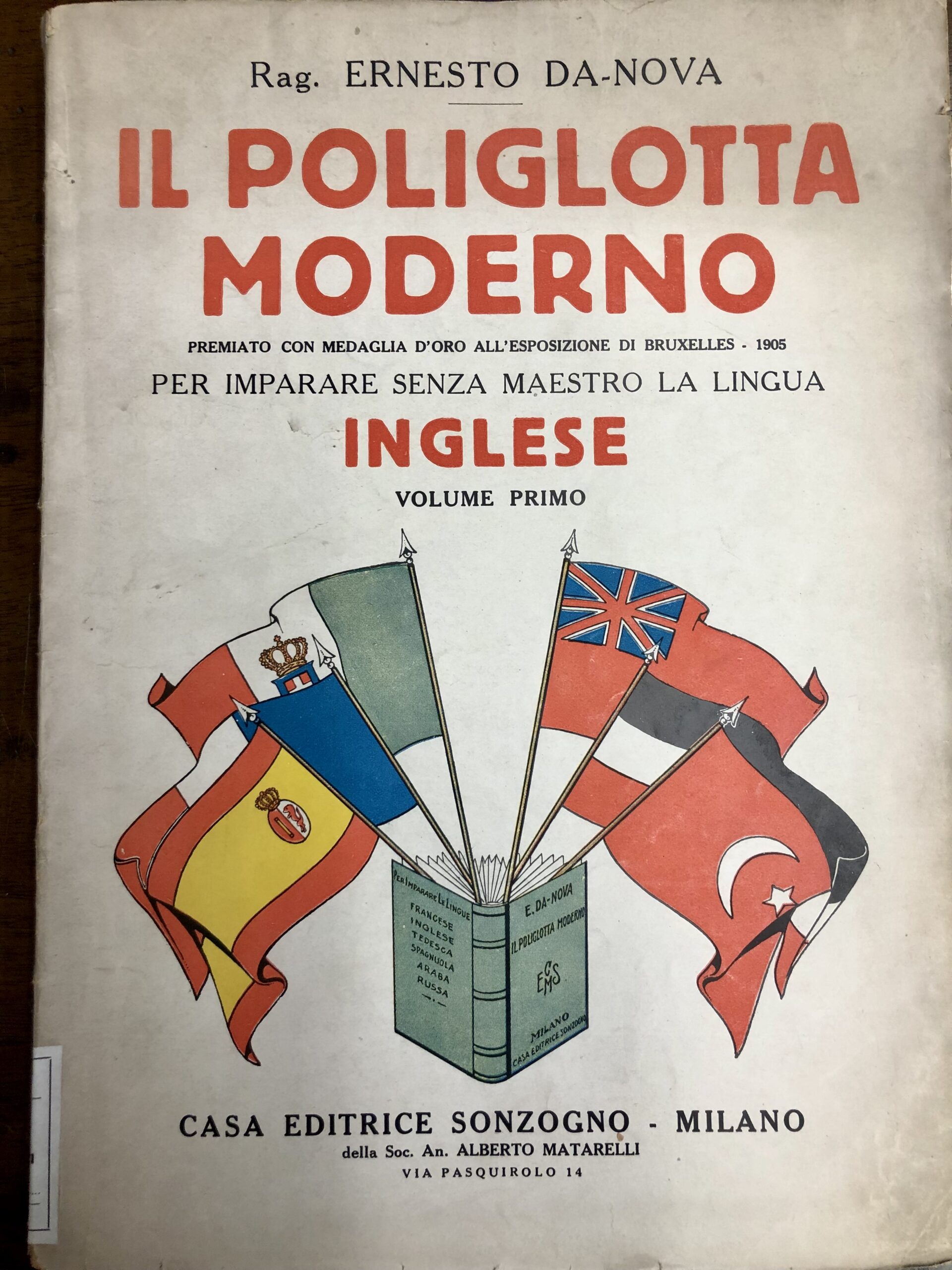-
 Il poliglotta moderno
Il poliglotta moderno
Author
Year of publication
1905
Edition
N/A
Place of publication
Italy > Milan
Publisher
Number of pages
1093
Number of volumes
3
Proficiency level
Type of material
Target learners' age
Teaching/Learning context
Method/Approach
Type of author
Author's country of origin
Teacher's book
No
Supplementary materials
Visuals
Is the book stored in the physical Italy ELT Archive?
No
Where else can I find the book?
Short description
Il poliglotta moderno was a series of correspondence educational courses for the teaching of English, French, and German, published as a weekly magazine by Sonzogno between 1905 and 1907. The series was edited and directed by Ernesto Da Nova, an accountant and “a businessman whose success was in mass-marketing good English and in building a correspondence language school” (Sturiale 2020, 244). The course aimed at teaching foreign languages using an easy and plain (“facile e piano”) system, based on the use of few words and rules but a lot of practice, as claimed by Da Nova himself.
For the present project, the copies of Volumes I and II available at the Biblioteca Statale in Cremona were examined. Volume I (printed in 1929) comprises Lessons 1 to 34, while Volume II (printed in 1927) comprises Lessons 35 to 86.
The grammar areas covered in the volumes are explained deductively at the beginning of each lesson. The examples in English are translated into Italian, and their pronunciation is indicated by means of orthographic transcription, i.e. using the spelling conventions of Italian (“pronuncia figurata”). The grammar explanation is followed by a vocabulary list (each item is accompanied by its translation and pronunciation).
The lessons include translation exercises (from Italian into English and from English into Italian), reading passages to be read aloud, and a section titled “Conversazione” (Conversation) reporting common expressions for greeting someone, talking about the weather, asking for and giving directions, as well as expressions used in business letters and meetings.
At the end of the lessons, a page is dedicated to selected items in a specific vocabulary area (e.g. clothing, flowers, geometric shapes), illustrated with drawings.

